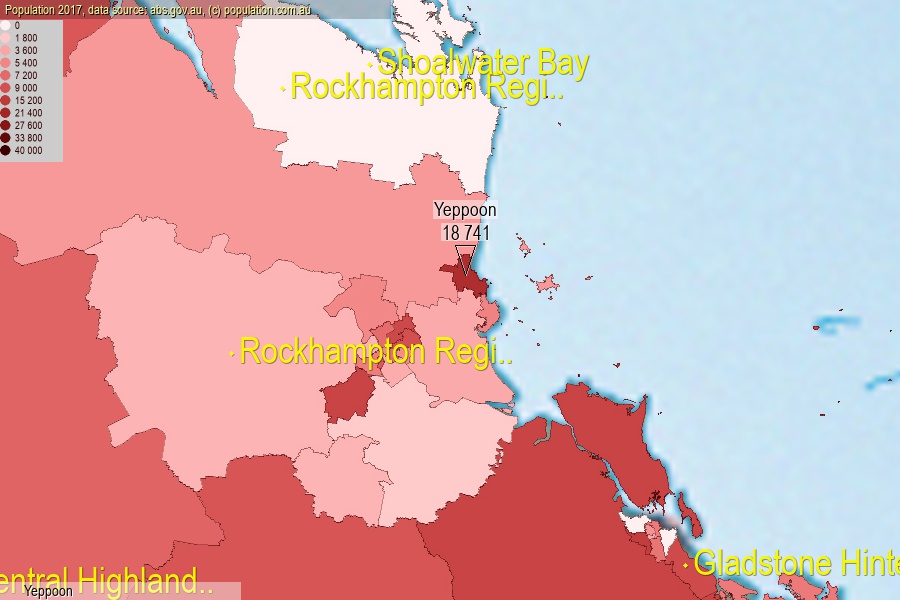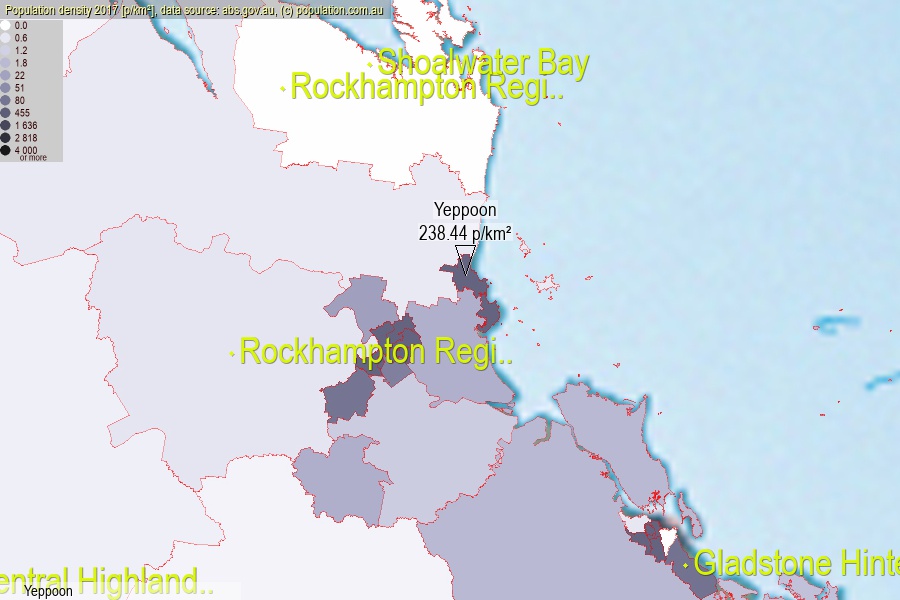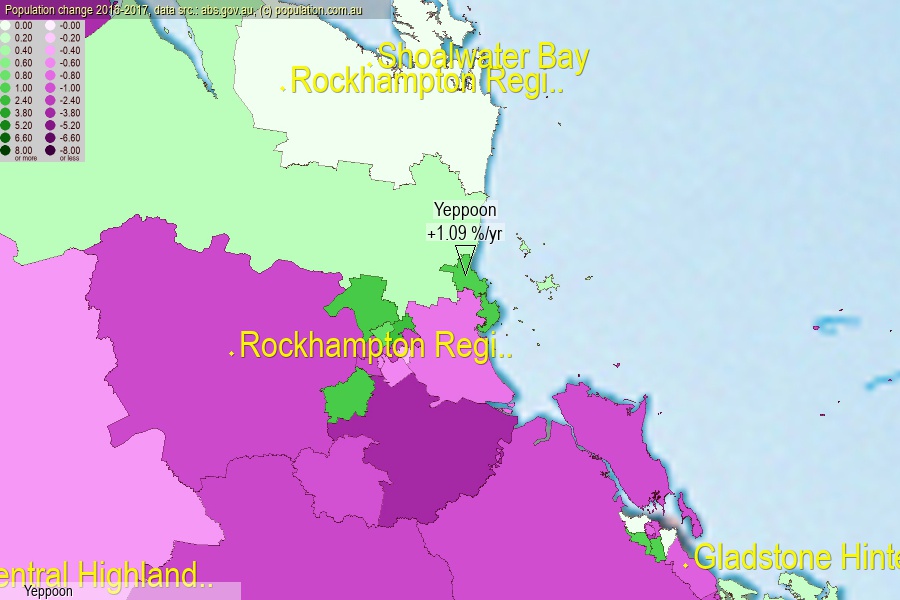 population.com.au
population.com.auLast official estimated population of Yeppoon (as Statistical Area Level 2) was 18 741 people (on 2017-06-30)[2]. This was 0.08% of total Australian population and 0.376% of QLD population. Area of Yeppoon is 78.60 km², in this year population density was 238.44 p/km² . If population growth rate would be same as in period 2016-2017 (+1.09%/yr), Yeppoon population in 2025 would be 20 438. [0]



Click to enlarge. Yeppoon is located in the center of the images.
Population [people], population density [p./km²] and population change [%/year] [2]
View borders » (new window) [4]
[1991-1992] +2.85 %/Yr.
[1992-1993] +4.82 %/Yr.
[1993-1994] +5.19 %/Yr.
[1994-1995] +4.66 %/Yr.
[1995-1996] +3.70 %/Yr.
[1996-1997] +1.87 %/Yr.
[1997-1998] +2.18 %/Yr.
[1998-1999] +2.31 %/Yr.
[1999-2000] +1.13 %/Yr.
[2000-2001] +2.60 %/Yr.
[2001-2002] +3.08 %/Yr.
[2002-2003] +3.48 %/Yr.
[2003-2004] +3.99 %/Yr.
[2004-2005] +1.64 %/Yr.
[2005-2006] +3.00 %/Yr.
[2006-2007] +5.21 %/Yr.
[2007-2008] +2.77 %/Yr.
[2008-2009] +4.62 %/Yr.
[2009-2010] +2.22 %/Yr.
[2010-2011] +2.19 %/Yr.
[2011-2012] +3.44 %/Yr.
[2012-2013] +2.51 %/Yr.
[2013-2014] +1.38 %/Yr.
[2014-2015] +1.54 %/Yr.
[2015-2016] +1.00 %/Yr.
[2016-2017] +1.09 %/Yr.
[0] Calculated with linear interpolation from officially estimated population
[1] Read more about SA2 and Australian Statistical Geography Standard (ASGS) on abs.gov.au
[2] Population data from Australian Bureau of Statistics (Population and density: 2017; change: 2016-2017)
[3] Digital Boundaries: Australian Statistical Geography Standard (ASGS) 2016.
[4] Border coordinates are simplifyed using Ramer-Douglas-Peucker algorithm.